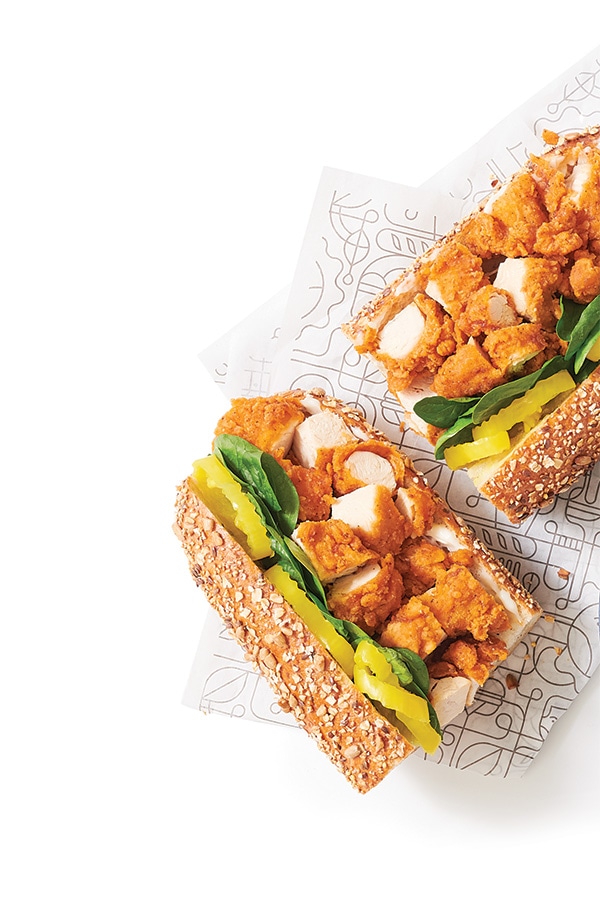Have a picky eater in your house? Your toddler may reject a food initially, but don't give up —it may take ten to fifteen tries before he decides he likes it. We've rounded up some kid-friendly ideas to try. (Remember to cut up all food into manageable, bite-size pieces.)
Sources:
"Children's nutrition: 10 tips for picky eaters." Mayo Clinic. September 6, 2014.
"Toddler – Food and Feeding." American Academy of Pediatrics. 2017.
1. Fun Veggie Spaghetti
Turn vegetables into "noodles" for a twist on the familiar. With a julienne peeler, cut zucchini into thin strips that resemble noodles. Cook with a little olive oil in a skillet until soft, then top with your favorite meat sauce and grated Parmesan cheese.
Tip: Cut the noodles into small pieces for younger toddlers to make eating easier.
Sources:
"How to Get Your Child to Eat More Fruits & Veggies." HealthyChildren.org. November 10, 2016.
"Selecting Snacks for Toddlers." HealthyChildren.org. December 14, 2016.
RD recommendations; Reference document created by Publix registered dietitians based on the 2015 Dietary Guidelines for Americans. Publix Baby Health & Wellness Recommendations. Supplied on 5/19/16.
"Infant and toddler health." Mayo Clinic. June 4, 2016.
2. French Toast Sticks
Breakfast for dinner is always a hit. Make quick French toast sticks by dipping whole wheat bread into a mixture of egg, milk, vanilla, and a dash of cinnamon. Cook on a greased skillet until golden brown on both sides. Cut into toddler-friendly "sticks" and serve with low-fat vanilla yogurt for dipping and a side of fresh berries.
Tip: Spread the French toast with a little nut butter for added flavor.
Sources:
RD recommendations; Reference document created by Publix registered dietitians based on the 2015 Dietary Guidelines for Americans. Publix Baby Health & Wellness Recommendations. Supplied on 5/19/16.
"Making Healthy Food Choices." HealthyChildren.org. March 3, 2016.
3. Baked Chicken Fingers
This kid favorite is easy to make at home. Dip chicken tenders in egg, then roll in crushed corn flake cereal. Bake ten to twelve minutes or until the internal temperature reaches 165°F and breading is well-browned. Chop into small pieces and serve with barbecue sauce, ketchup, or honey mustard for dipping, alongside a few steamed broccoli "trees."
Tip: You can find prepared chicken tenders in the Publix Deli.
Sources:
"Selecting Snacks for Toddlers." HealthyChildren.org. December 14, 2016.
RD recommendations; Reference document created by Publix registered dietitians based on the 2015 Dietary Guidelines for Americans. Publix Baby Health & Wellness Recommendations. Supplied on 5/19/16.
4. Sloppy Joes
Sloppy Joes using lean ground beef, turkey, or chicken are tasty when mixed with a bit of tomato paste, tomato sauce, and yellow mustard. Serve on whole wheat slider buns with steamed green beans.
Tip: Stir a little pureed vegetable (such as sweet potato or carrot) into the meat for an extra serving of veggies.
Source: "Children's nutrition: 10 tips for picky eaters." Mayo Clinic. September 6, 2014.
5. Chicken Fried Rice
Fried rice made with eggs, meat, and small pieces of vegetables is a good food for toddlers who are learning to feed themselves. Sauté cooked brown rice in olive oil with eggs, peas, cubed carrots, and bite-size pieces of well-cooked chicken. To reduce the sodium, rinse and drain canned beans and vegetables.
Tip: To cut prep time, use reduced-sodium canned or frozen carrots.
Sources:
"Children's nutrition: 10 tips for picky eaters." Mayo Clinic. September 6, 2014.
"Selecting Snacks for Toddlers." HealthyChildren.org. December 14, 2016.
RD recommendations; Reference document created by Publix registered dietitians based on the 2015 Dietary Guidelines for Americans. Publix Baby Health & Wellness Recommendations. Supplied on 5/19/16.
Tip: Encourage picky eaters to try new foods by serving them to the entire family. Here are some more family mealtime hints.
This content is provided for general information purposes only. It is not intended to be a substitute for medical advice or a guarantee of prevention, improvement, or treatment of specific conditions. Always consult with your healthcare provider about your specific medical questions or concerns.


